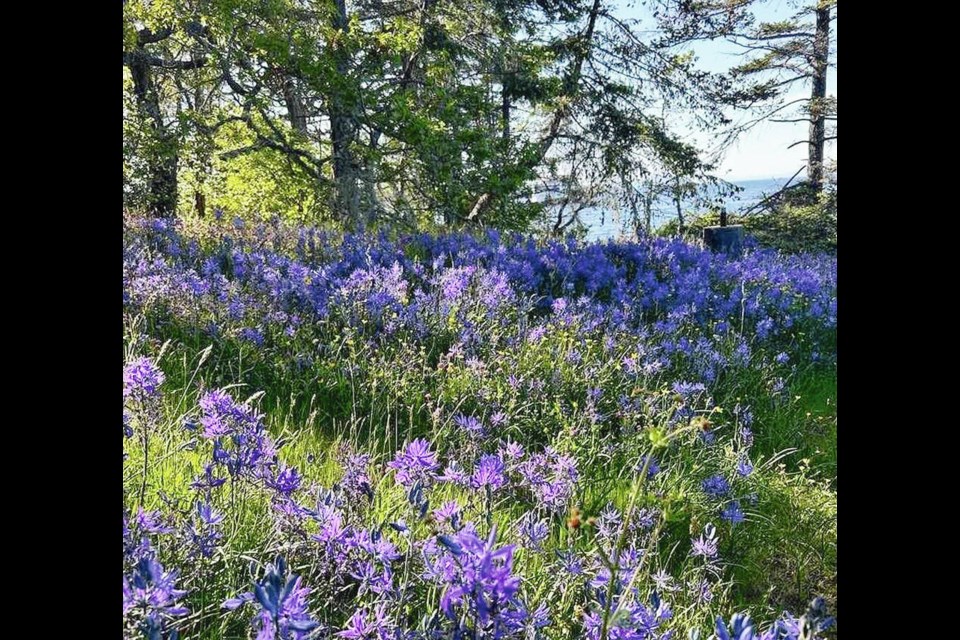While English Ivy may look beautiful as it crawls up old buildings, it’s one of the many foreign invasive plant species in B.C. that choke out native plant species.
English Ivy and other plants that aren’t native to the area have the ability to change entire landscapes.
“With development and urbanization and things, we’ve really changed the landscape [of] what existed [on Â鶹´«Ã½Ó³»Island] prior to colonization,” says Hunter Jarratt, a restoration consultant at KiKi Nursery in Ladysmith.
“There are a lot of evolutionary relationships that have formed over time.”
Though it’s normal for new evolutionary relationships to form, urbanization has made it hard for native plant species to keep up, Jarratt said.
“They can’t really compete in a lot of places. A lot of these [invasive] plants will steal resources … And you think, seven generations from now, what will the world look like?
“There [are] probably going to be a lot less species.”
It’s tough to predict which plants will be here in the future, but the pace at which invasive plants are moving in poses the biggest threat to native plant species and ecosystems, he said. “[Time] is a luxury we don’t really have, especially with climate change.”
Jarratt, who recently completed the Natural Resources Protection Program at Â鶹´«Ã½Ó³»Island University and is now working on the Restoration of Natural Systems certificate program at the University of Victoria, has been sharing information about invasive species and local ecology on social media since 2021.
He said if invasive plant species were allowed to take over, other species — such as specialist species that require a certain plant to survive — would likely die out.
Specialist bees, for example, are bees that require a specific plant to complete their life cycle. Andrena astragali — or the death camas mineor bee — is the only bee that can tolerate the toxins in death camas. No death camas, no bee.
“And of course by helping insects, you help the whole food web, because then you have food for birds and butterflies and everything that eats those and so forth.”
The Discourse spoke to Jarratt about some of the more prolific invasive plant species on Â鶹´«Ã½Ó³»Island. According to Jarratt, there are many, but a few stand out as the worst culprits when it comes to affecting local plants and habitats.
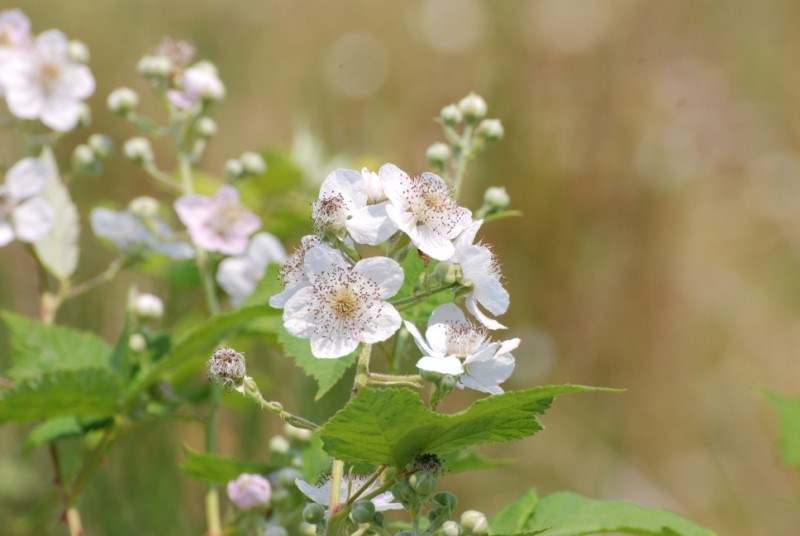
Himalayan blackberry
Its berries might be delicious, but this species affects native blackberry plants, such as Pacific blackberry. The Himalayan blackberry grows in many different areas, including along pastures and roadsides, as well as the banks of streams and the edges of forests. According to the Invasive Species Council of B.C., it can crowd out low-growing vegetation and its dense thickets can limit the movement of animals. It can grow up to five metres tall, with canes growing up to 12 metres long.
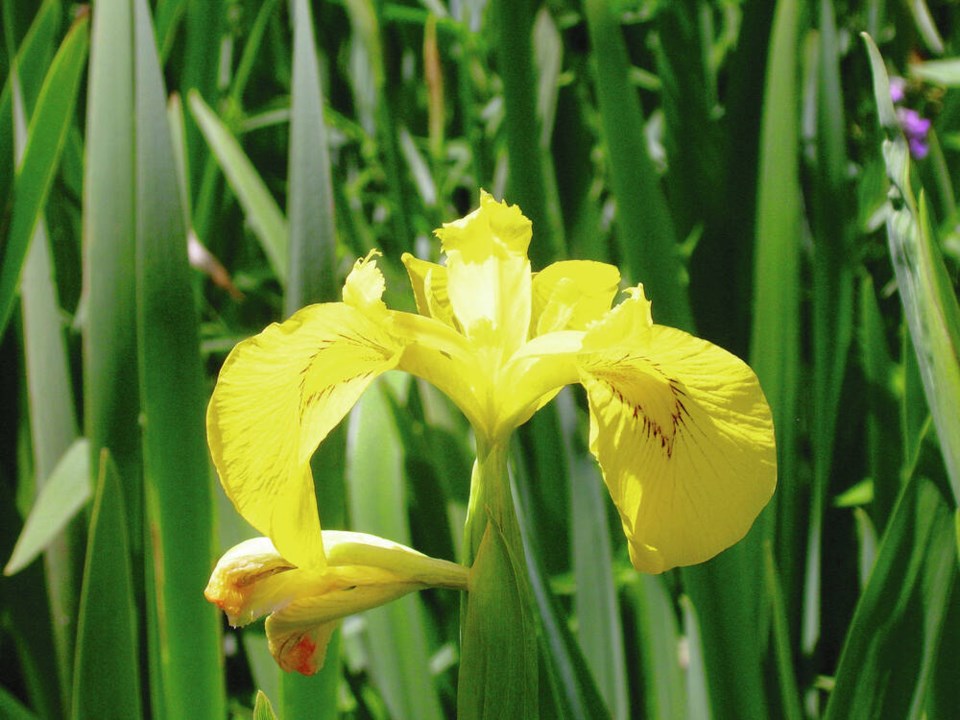
Yellow flag iris
With a native geographic range of Northern Africa, Asia and Europe, yellow flag iris — also known as water flag — is a noxious weed often found along the shorelines of lakes, ponds, streams, wetlands and ditches. Its seeds spread quickly, and according to the Invasive Species Council, hundreds of the plants in an area may be connected to one another due to its extensive root system. “It will go into a wetland and it will quite literally change the entire foundation of that wetland ecosystem,” Jarratt said.
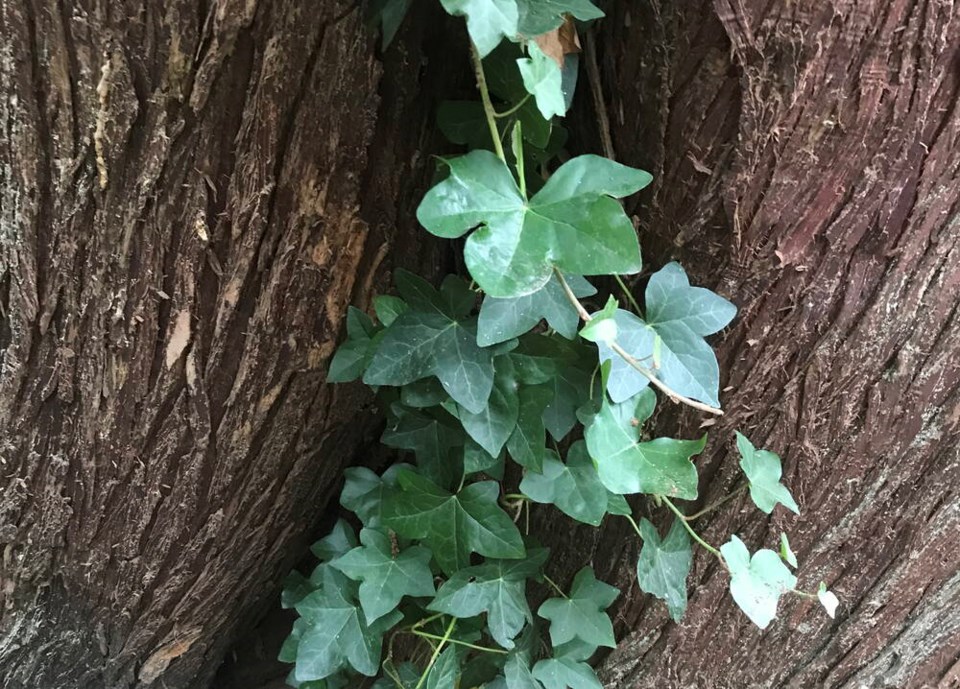
English ivy
This evergreen vine is described as a “smothering invasive” by the Invasive Species Council of Metro Vancouver. It can climb up trees and make them more susceptible to wind damage by weakening them, as well as shortening their lifespan. It has been successful in B.C. since it grows quickly without too much need for light or water. English ivy has star-shaped leaves that have a waxy shine, and produces white to yellow-green flowers in the late summer and early fall.
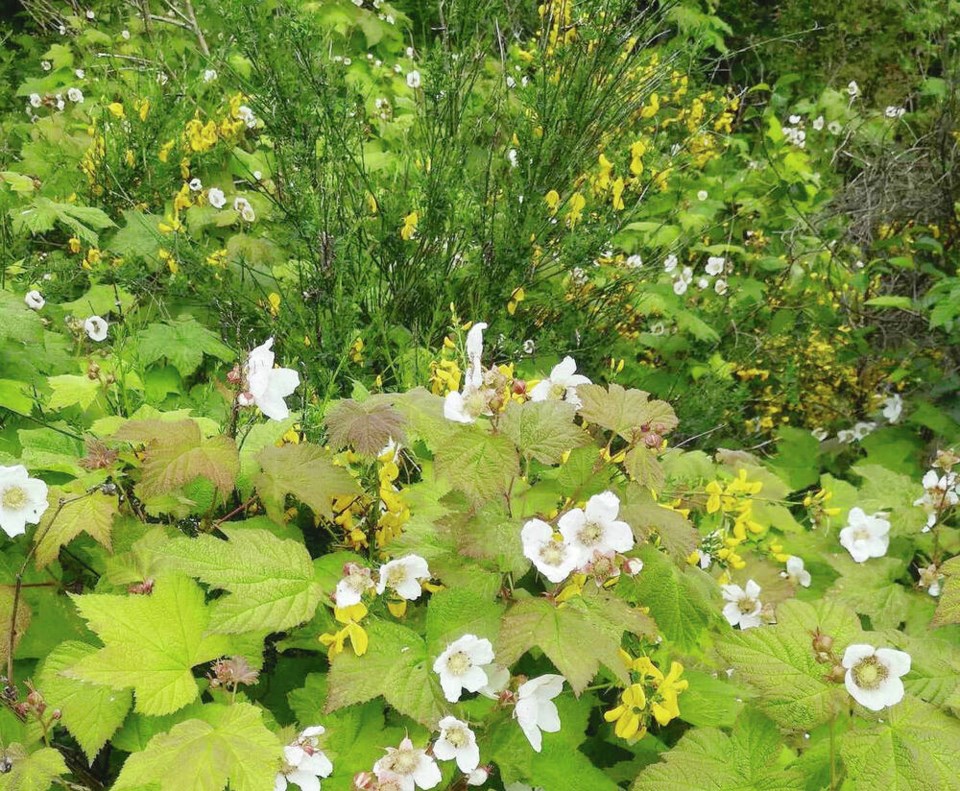
Scotch broom
Introduced from Europe, Scotch broom can live up to 25 years and produces seeds that can survive in the soil for 30 years. It grows up to three metres tall with woody stems and bright yellow flowers.
On Â鶹´«Ã½Ó³»Island and the B.C. coast, an organization called Broombusters was founded in 2006 in response to communities’ growing concerns about the spread of Scotch broom.
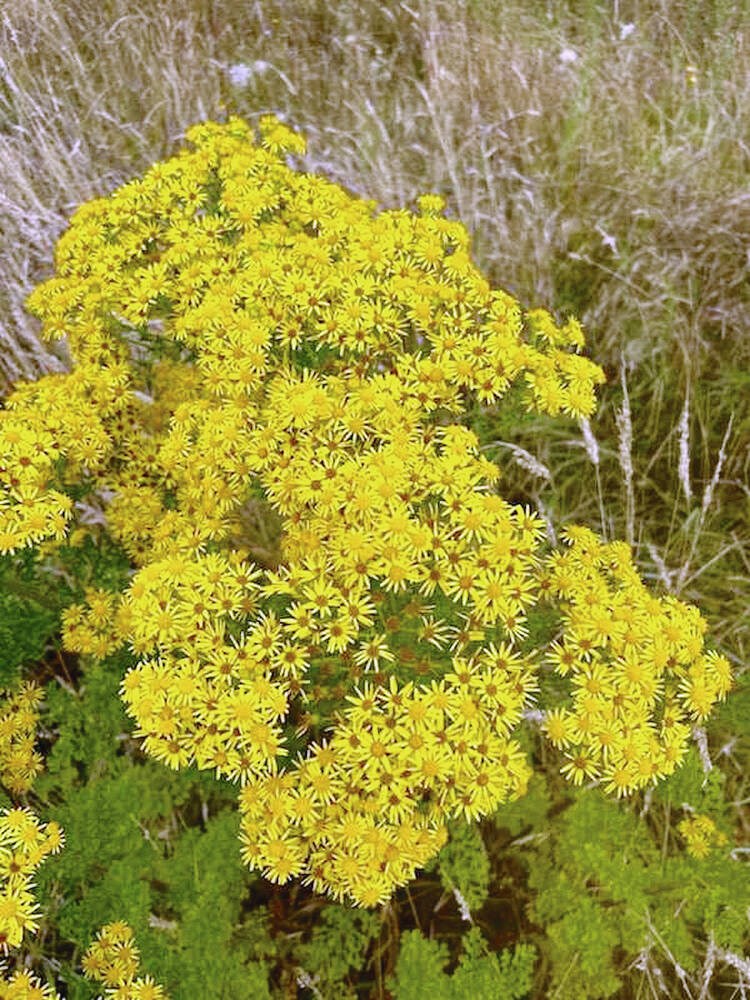
Tansy ragwort
Also known as stinking willie or staggerwort, this noxious weed can grow up to 1.2 metres in height with yellow daisy-like flowers. One plant can produce 150,000 seeds that can live in soils for up to 15 years. Tansy ragwort can cause liver damage to livestock. The alkaloids in this plant also taint honey produced by bees, causing it to be too bitter to sell.
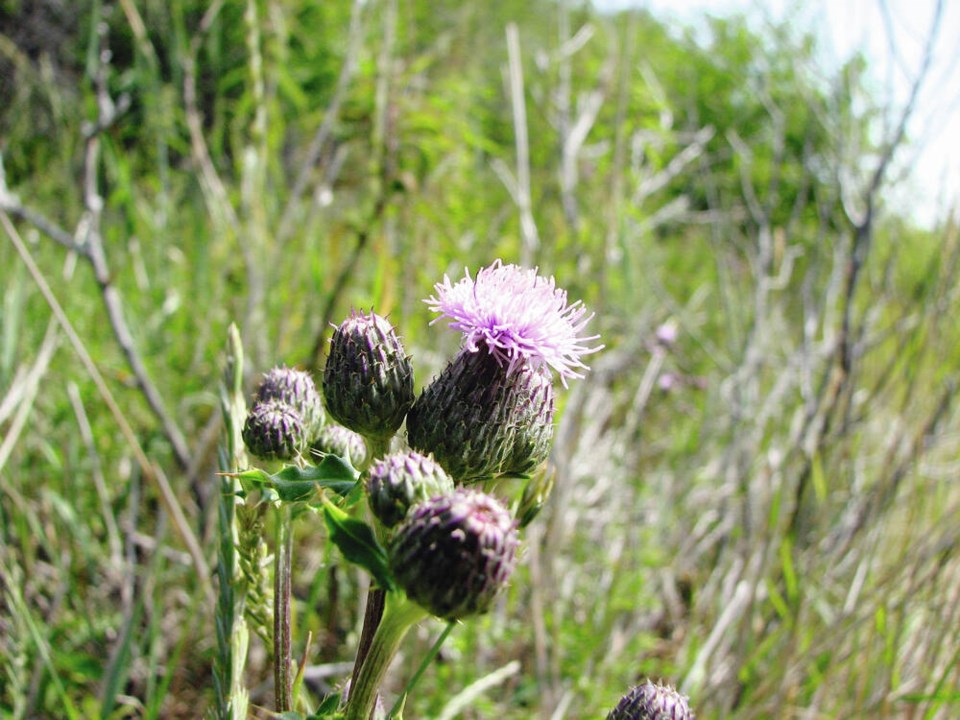
Canada thistle
It might have Canada in its name, but Canada thistle was introduced hundreds of years ago, Jarratt said. The plant is native to the eastern Mediterranean and southeastern Europe. In Biology and Management of Noxious Rangeland Weeds from Oregon State University Press, researchers speculate that it was introduced in the 1600s.
“It’s just so widespread that people think it’s from here,” Jarratt said.
Canada thistle has bright purple and sometimes white flowers and can grow up to two metres in height. The leaves have sharp edges with white hairs on the underside, but the stems are spineless. The plant’s seeds look similar to dandelion seeds.
Bullthistle
Bullthistle is sometimes mistaken for Canada thistle but bullthistle flower bases have spines, inlike Canada thistle. Its seeds are spread by the wind and have spiny winged and slightly woolly stems. In the summer, this plant produces purple flower heads that range from 3.8 to 7.8 cm in diameter.
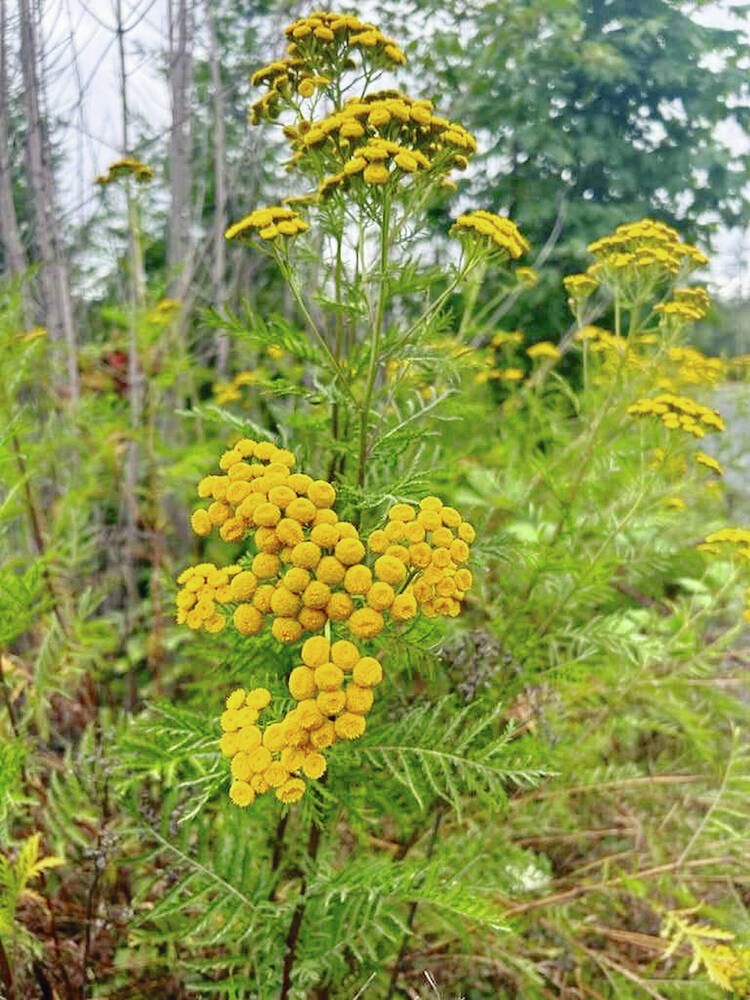
Common tansy
Native to Europe and Asia, common tansy was introduced in North America for medicinal purposes in the 1600s. Deemed a noxious weed, it can grow up to 1.5 metres tall with bright, round yellow flowers and green serrated leaves. It’s often found in disturbed areas such as roadsides or pastures. Common tansy is toxic to both livestock and humans.
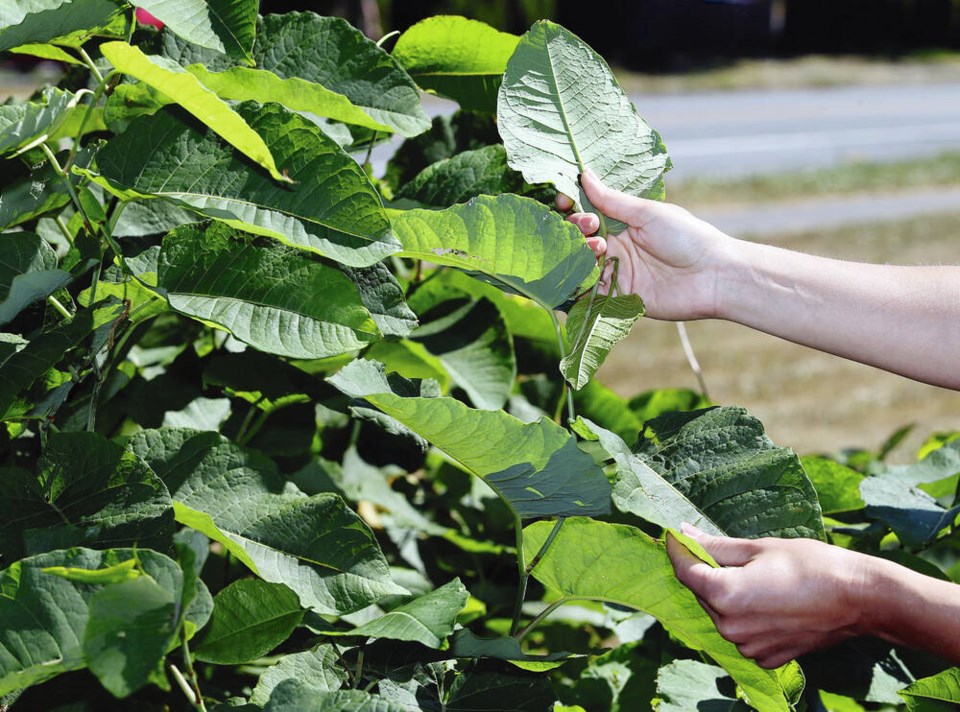
Knotweed
“Knotweed is incredibly hard to get rid of,” Jarratt said. In B.C., there are four different types of knotweed that cause significant issues: Japanese knotweed, Giant knotweed, Bohemian knotweed and Himalayan knotweed.

Giant hogweed
A member of the carrot family, this species resembles Queen Anne’s lace but can reach heights of five metres and is extremely toxic. Jarratt says the plant can cause pretty serious issues because of its photosensitivity — extreme sensitivity to UV rays from the sun. Direct skin contact with this plant can cause blisters, burns and scarring.
It can grow quickly in ravines and stream banks and poses a risk to humans and ecosystems. It is also designated as a noxious weed.\

St. John’s wort
Like tansy and Queen Anne’s lace, common St. John’s Wort was introduced as a medicinal and ornamental herb to North America from Europe. It’s native to Europe, Asia and North Africa.
“If I’m on a hike and see St. John’s wort, I’m gonna pull it, because I know that it produces upwards of 100,000 seeds per plant,” Jarratt said.
It can grow up to one metre in height and has yellow flowers and dark green leaves that display small transparent dots when held up to light.
Help stop the spread
To help stop the spread of invasive species, there are a few preventative measures you can take, says Jessica Bayley, executive director of the Coastal Invasive Species Committee, a non-profit working to reduce the negative effects of invasive species on the Island, Gulf Islands and Sunshine Coast.
Bayley said a good first step is to learn about the invasives that are a problem in your region. She said there is a list of priority species on the group’s website () as well as information on species documented regionally.
Once you’re familiar with invasive species in your area, reporting them can be helpful to aid in their removal or stop their spread.
The Coastal Invasive Species Committee has an information page on its website on how to report invasive species. The province also has an online form that people can fill out as well as the for cellphones.
In the Comox Valley, most properties with species of invasive knotweed are eligible for the Coastal Invasive Species Committee’s Knot On My Property program.
“We partner with the Comox Valley Regional District, Town of Comox and City of Courtenay to deliver this program, which covers 100 per cent of the cost of treatment of knotweed species (giant knotweed, Japanese knotweed, Bohemian knotweed and Himalayan knotweed) and giant hogweed on private property,” Bayley said.
Management practices may vary
Not all invasive plant species should be pulled up, and removing some requires special care, Bayley said.
“For example, in the case of knotweed, it can make the infestation worse,” she said.
For knotweeds, which have an extensive root system and grow and reproduce aggressively, both the Coastal Invasive Species Committee and province of B.C. say the best, most cost-effective way to manage them is with the use of herbicide.
Under the Knot On My Property, Coastal Invasive Species Committee staff monitor and remove knotweeds and giant hogweed on private lands either manually or with a herbicide.
But property owners are responsible for managing other invasive plant species.
It’s best to look up management practices for removing particular invasive plant species, Bayley said. For example, for plants such as Scotch broom, it can be quite simple to pull the smaller plants.
The Coastal Invasive Species Committee says “larger plants must be cut down at the base or just below ground height, preferably between March to June, when the flowers are out but have not yet gone to seed.”
Removing species such as giant hogweed and poison hemlock requires care, since they are toxic — giant hogweed can burn the skin when touched. French Creek, outside Parksville, is considered the epicentre of giant hogweed on Â鶹´«Ã½Ó³»Island.
Some plants like Himalayan blackberry are safe to pull, but care must be taken due to their thorns.
Information on how to dispose of invasive plants can be found on the Coastal Invasive Species Committee’s . The list includes disposal locations for various Â鶹´«Ã½Ó³»Island communities.
Some invasive plant species are problems in other regions, but are not yet established on Â鶹´«Ã½Ó³»Island. Bayley said it’s important for people to be aware of species that may pose a threat, since early detection can prevent them from becoming established.
One looming threat is tree of heaven. Native to Taiwan and China, it’s the preferred host for the spotted lanternfly, which could pose significant risk to fruit producers, including vineyards, if it were to become established in B.C.
“We have received isolated reports of species in the area but suspect it is underreported.”
Plant a variety of native species
Invasive species often like disturbed areas, so planting native species instead is a great way to prevent invasives from establishing, said Bayley, whose group recommends salal and deer fern as alternatives to invasive English ivy.
There are also some ornamental plants that are helpful, such as purple wintercreeper euonymus, Taiwan creeping raspberry and privet honeysuckle.
“Not all non-native species are invasive,” said Bayley, who notes that only non-native species that have a negative impact on the environment, people or the economy are considered invasive.
Jarratt said of his favourite things to do is support the establishment of a Garry oak ecosystem.
The only species of oak native to B.C., Garry oaks are limited to a small strip on the east coast of Â鶹´«Ã½Ó³»Island and the Gulf Islands that extends as far south as the San Joaquin Valley in California, according to the Nature Conservancy of Canada.
Species that grow well with Garry oaks include common camas and great camas. “Those two are probably one of the best things somebody could plant in their garden,” Jarratt said.
He added that sea blush, yellow monkey flower, wooly sunflower, western buttercup and small flower alum root are also great options.
“Plants that grow together stay together. They are all friends,” he said.
Jarratt said it’s also helpful to provide sources of food for pollinators. A lot of insects use Garry oak trees, but they need other species for other life stages.
“These ecosystems are much more than just the trees,” he said.
Where to learn more
Bayley said one of the best resources is , produced by Habitat Acquisition Trust. It offers planting suggestions based on location and notes additional benefits such as whether the plant attracts butterflies or provides shelter for wildlife.
For more information on native plan alternatives, check out the Invasive Species Council of B.C.’s booklet.
There are also some native plant nurseries on Â鶹´«Ã½Ó³»Island. Stewardship Centre for B.C. has a full list of where to buy native plants on its website, .
Madeline Dunnett is a Local Journalism Initiative reporter with The Discourse. The Local Journalism Initiative is funded by the Government of Canada.
